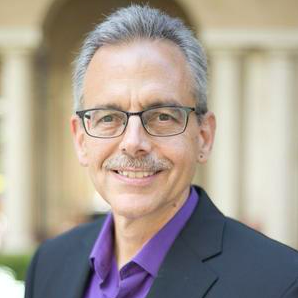
Photo: Health officials distribute the Moderna COVID-19 vaccine to front line health workers and first responders in Baltimore County, Maryland during December 2020. Since the beginning of such efforts nationwide, vaccine equity has emerged as a leading concern as critics say mass vaccination sites are inaccessible to America's more vulnerable communities.
No one should be surprised that America’s COVID-19 vaccine rollout system has produced sharp racial disparities in vaccination rates – the system has played upon existing inequalities from digital access, to quality of employment, to transportation access. Indeed, I would have flunked any of my graduate students had they failed to anticipate what was soon to occur. The positive news is that together with the business community, we can achieve vaccine equity in a way that gets us back on our feet for good.
Consider that in nearly all states, the first group to become eligible for shots after health care workers and those in nursing homes were those above the age of 65 – a group that is generally far more white than the younger Black and Latino workers who do the essential tasks which put them at risk. There is a rationale here – older individuals may be less exposed but they do face a higher probability of death from COVID-19. But let’s be honest: this is a system that is racially disparate in its impact if not its intention.
Also consider the main way you sign up for a dose of these life-saving vaccines. If you’re in the right occupational or age category, it’s equally open to all – provided you have a computer, high-speed internet, the technological sophistication to add an automatic refresher to your preferred browser, a job or a cushy retirement where it’s easy to check your display constantly, flexible employment that allows you to dash away when an appointment opens, and a car to either get to or drive through one of the mega pods.
By contrast, designing with vaccine equity (and not equality) in mind would have prioritized communities ravaged by COVID where workers are low-paid, lack access to insurance and housing is overcrowded. It would have rushed resources to those communities, paying less attention to high-profile stadium mega-sites and more attention to local neighborhoods. And it would have set standards of accountability that looked not just at delivering doses but also closing pre existing racial gaps.
Fortunately, a shift toward vaccine equity is beginning to emerge. In California, for example, the state has decided that it will temporarily set aside 40 percent of available vaccines for residents in areas facing the biggest economic and health challenges according to a metric called the California Healthy Places Index. The state has likewise been distributing more vaccines through community clinics and mobile pop-ups in poorer neighborhoods. Meanwhile, some employers have jumped in, particularly in agriculture, to provide shots to essential workers.
This is good for the workers and communities, of course, but vaccine equity is also good for business: You can’t sustain production when your employees fall ill or shy away from work because they fear that disease will follow them home to their beloved families.
Indeed, this is yet another instance in which the usual admonition of traditional economics – that equity must be bad for the economy – is, to use a particularly apt expression, dead wrong. Prioritizing those who are least advantaged and most affected by COVID will more quickly reduce the overall burden of disease. And this is not a one-off: Research has increasingly shown that both countries and metropolitan areas that are more equitable and, in the U.S. context, less racially segregated, are better able to sustain employment and business growth.
So what can the business community do that reflects this lesson of vaccine equity, and that doing good and doing well can go hand-in-hand?
First, become a strong advocate for vaccine equity in the U.S., pressuring state and local authorities to address disparities; if business adds its voice to the community, it will make a big difference in the politics. Second, take independent action by opening up employment sites for mobile clinics and mass vaccinations, particularly of essential workers. Third, advocate for international vaccine equity, recognizing that the global economy could lose over $9 trillion dollars -- 40 percent of it in advanced economies – unless developing countries can reboot their economies and their import demand.
But most important, carry the lessons of this COVID-19 era forward. We now know that our economy is only as viable as our public health system – but we have created a health system that leaves too many with inadequate access to care. We now know that our economy and markets are only as strong as the contributions made by essential workers – but we too often offer them low pay and little respect. We now know that when a crisis hits, the spirit of mutuality will get us through – but we have organized large parts of our economy as every person for themselves.
Vaccine equity is needed now but designing for racial and social equity and business-community collaboration must become part of the re-imagination and restructuring that can guide our long-term recovery.
Image credit: Baltimore County Government/WikiCommons

Manuel Pastor is Director of the Equity Research Institute at the University of Southern California and co-author of the forthcoming Solidarity Economics: Why Mutuality and Movements Matter (Polity Press, 2021). You can follow him on Twitter.














